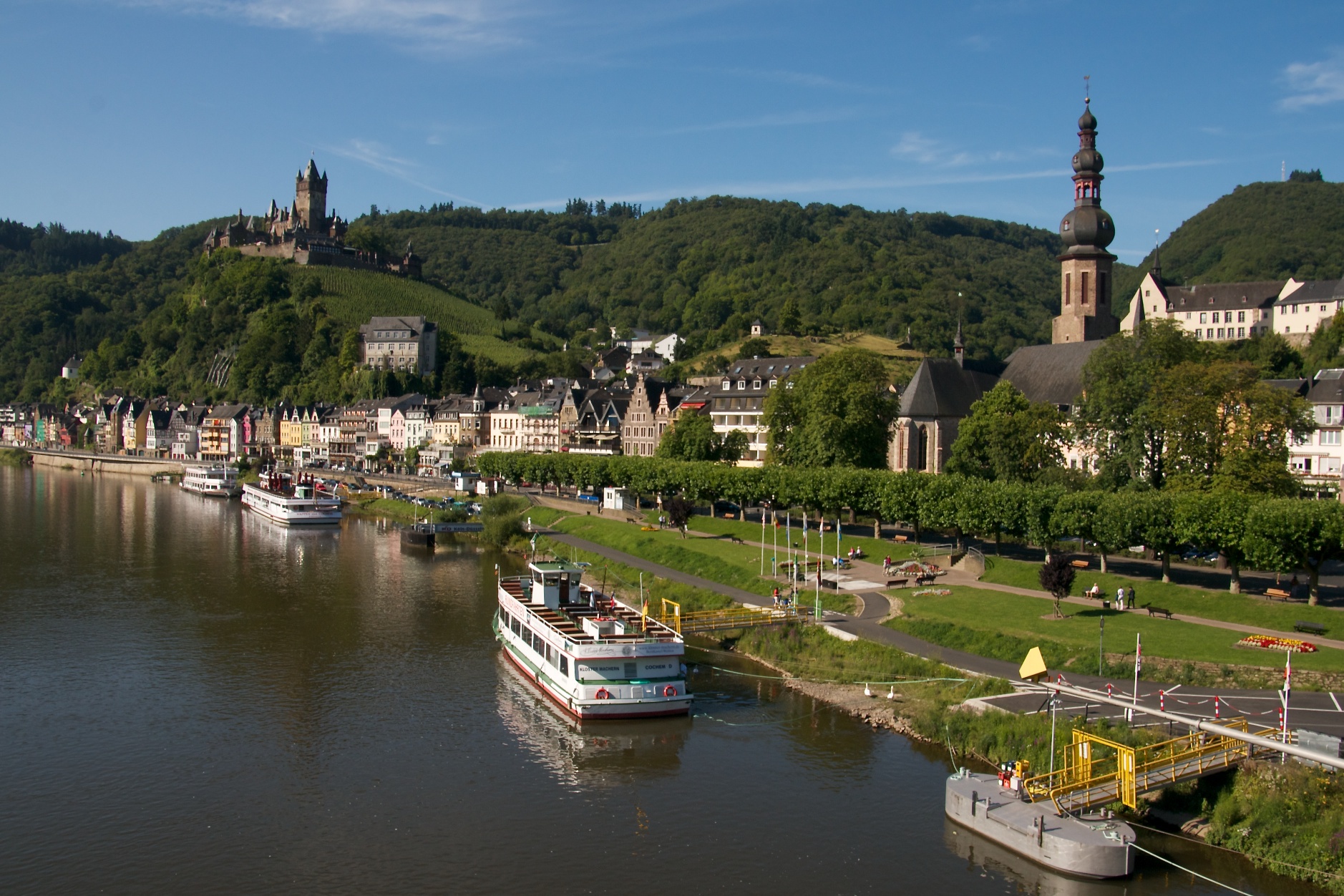
Only an hour from my home base is the town of Cochem on the Mosel river. We have gone there several times by tour boat or car. This morning I got up early to make another excursion, the Cochem Castle tour
Arriving in Cochem we parked our car at the Pinnerstrasse city parking lot, which is only 5 Euro all day and right behind the train station. From there we walked down to the main Bus Station to catch a ride (~6 Euro round trip) to the castle. I found out later that there is also a stop at the Marktplatz. We saw people from the bus hiking up the steep hill, so I believe it’s doable.
When we stepped off the bus, we saw the Cochem Imperial Castle towers majestically on the castle hill. I read it was built around 1000, destroyed in 1689 and rebuilt from 1874 to 1877. So we took the short steep walk up to the gate.

As we took the trail to ascend to the Reichsburg castle we saw the “Tummelchen” tower with its old “Zuckertürmchen” (litte sugar tower) that was used to guard the city limits. The remains of the historic city walls, which still survived up to the top of the “Tummelchen” is still intact.
We waited for our English tour at the castle Restaurant. There I indulged on a Black Forest Cake and drank a cup of coffee


As the history was told by our tour guide, the Cochem castle mainly laid in ruins for several centuries since it was destroyed in 1689 by French troops.

1000 A.D. Count of Palatine
1151 German Kings
1294 Archduke Trier
1332 Remodeling of the castle complex
1689 Destroyed by French troops of Ludwig XIV
1868 Rebuilt by Louis Ravené
1943 Owned by German Empire
1949 German federal Republic
1978 acquired by the City of Cochem
A Berlin merchant and honorable citizen of Cochem, Louis Fréderic Jacques Ravené, had it rebuilt from 1868 to 1877 according to his taste of romanticism. The Cochem Castle was designed in the Gothic Revival style during the period of Historicism.

At the Cochem castle overlooking the Moselle
According to the monument protection law of Rhineland-Palatinate, Cochem castle is registered in the state protected monument list. The facility is also a cultural asset according to the Hague Convention, and is marked with the blue and white protection symbol.

We walked through the magnificent castle courtyard admiring the architecture
The architecture and walls of the rooms reflect a mixture of Gothic, or Romanesque style, like the Refectory room below. The mighty fireplace, takes up the entire western wall.

An interesting chandelier with deer horns is hanging from the ceiling in the Cross-over room.


The stairs led us to the Weapons room. The walls were decorated with hunting trophies. The windows were made of bull-glass (Butzenscheiben) set in lead. There we saw beautiful Pewter mugs (3 to 5L) and late medieval Armor in the corner
Decorative stained glass windows in the Gothic room and painted ceilings can be seen and admired throughout.


I took a peek out of some of the windows in the castle, and took this shot of the court yard and the buildings


A fantastic view from the castle to the Mosel River


We concluded our castle tour with dropping a penny down the very deep well. I believe it took 8 seconds to reach to bottom.

We took the city bus back down to the Marktplatz and hung out at the many shops. Another highlight for Cochem is the town hall built in 1739 in the baroque style. Also the Marktplatz with Martinsbrunnen (Martins fountain) and the old half-timbered gabled houses covered with Moselle roof slate in the narrow mountainous alleys.
Here is another bus stop that takes you to the central bus station

We felt hunger, our stomachs were growling, so we decided to walk down to the Mosel Promenade where most of the restaurants with patios are located.
We found a place to eat with a balcony on the second level, and enjoyed the view to the Mosel river and vineyards.


Having an early dinner about 4.30 pm was a good idea before the bus and boat tours arrived.
While I was eating my Cordon Blue Schnitzel, I watched the arriving and departing cruise ships.

Also see “A Mosel boat cruise to Cochem” and taking the boat across the Rhine to Beilstein at the Moselle













